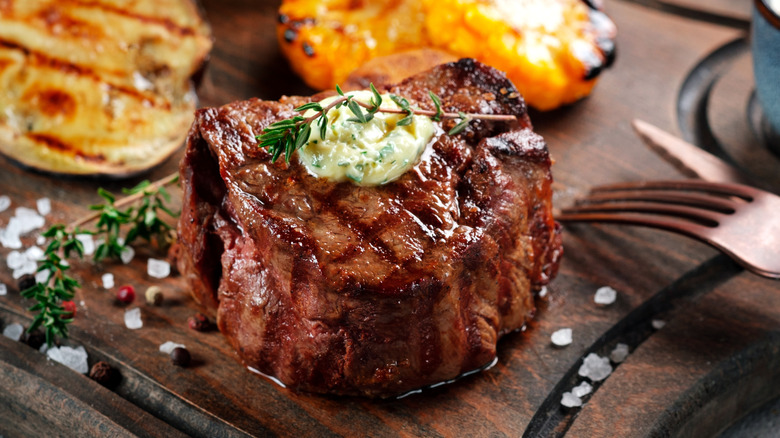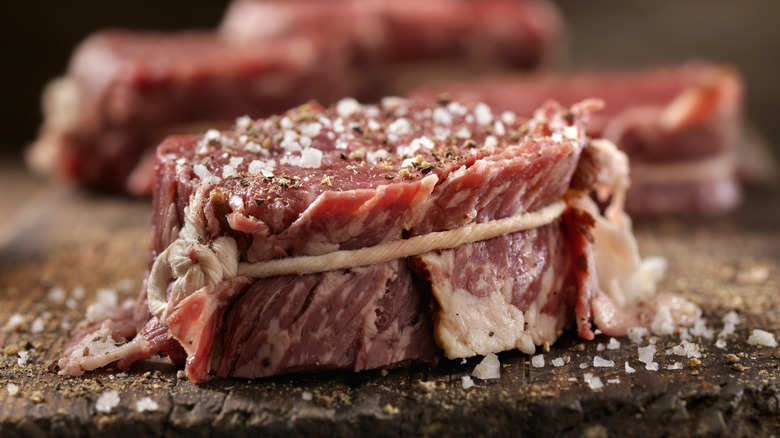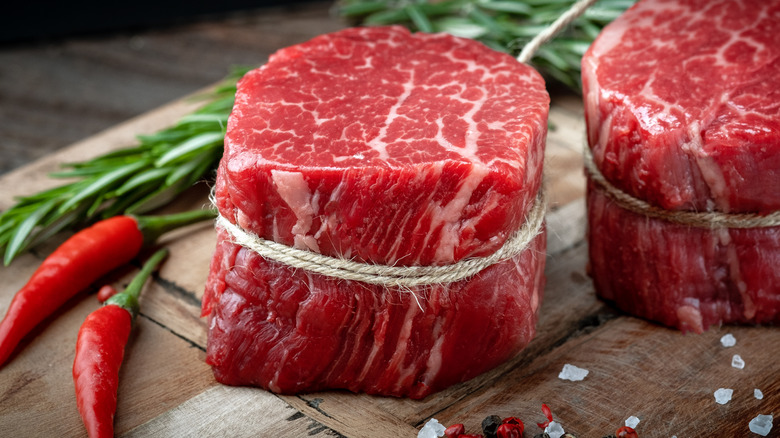If Your Steak Is Cooking Unevenly, One Simple Hack Will Eliminate The Problem
Every carnivore appreciates a well-cooked steak. There's nothing quite like that thin, caramelized crust giving way to a perfectly pink interior. Yet, it often feels like the technique, heat source, and seasoning vary each time you cook a steak. What's the secret to consistency? To level the playing field, you need to start the same way each time. One effective approach, aside from allowing your steak to reach room temperature, is to tie it up before cooking.
Steaks come in various widths and thicknesses, and while trimming excess fat is acceptable, no one wants to sacrifice good meat for a uniform shape. Using cooking twine or another heat-resistant string can help maintain consistency without wasting any delicious bits. This ensures that all parts of the meat cook at the same rate, preventing overdone and underdone portions. While this method may not be suitable for bone-in cuts, it works well for boneless steaks like compact tenderloins or even longer cuts like flank steak, especially when preparing a roulade.
How to tie up steak for even cooking
There are several ways to tie up a steak, which, when you think about it, is essentially a more compact roast. If you've ever tied a large roast, dealing with a steak is much more manageable and equally rewarding. Tying an entire filet roast or a stuffed flank steak involves using a long piece of twine to create loops around the meat, tying a knot about every half inch or so, and being careful not to flatten the meat. You can refer to Le Cordon Bleu's expert demonstration for the correct method, which takes some practice. When dealing with single filet mignons, tie the twine around the outer perimeter of the steak in one large loop to create a compact circle of meat.
If you don't have butcher twine at hand, a few other household items can be used to tie a steak. Dental floss can work, but it should be unwaxed and free of minty flavors to avoid transferring any unwanted tastes or residue to your steak.
Does it really work?
Yes, tying up a steak requires extra effort, so you might wonder if it's worth it. While many culinary experts swear by the benefits of having a compact piece of meat, Jess Pryles, an Australian Chef and the author of "Hard Core Carnivore," decided to put the practice of tying a steak to the test in a video she shared to Facebook. For her experiment, she used two pieces of venison, which is similar to beef tenderloin due to its leanness. She cut two equal pieces from a larger piece of meat to ensure consistency. One piece was tied in the loop and knot format mentioned above, while the other was left untouched.
She then seasoned and grilled both pieces of meat. As she placed them on the grill, you could see that the untied meat spread out in the heat, whereas the tied piece held its shape. After cooking both types of meat to the desired temperature and allowing them to rest, she cut into the steaks. The tied one was noticeably juicier and evenly cooked, while the untied steak appeared drier. Tying a steak seems well worth the slight extra effort for that perfect piece of meat.


